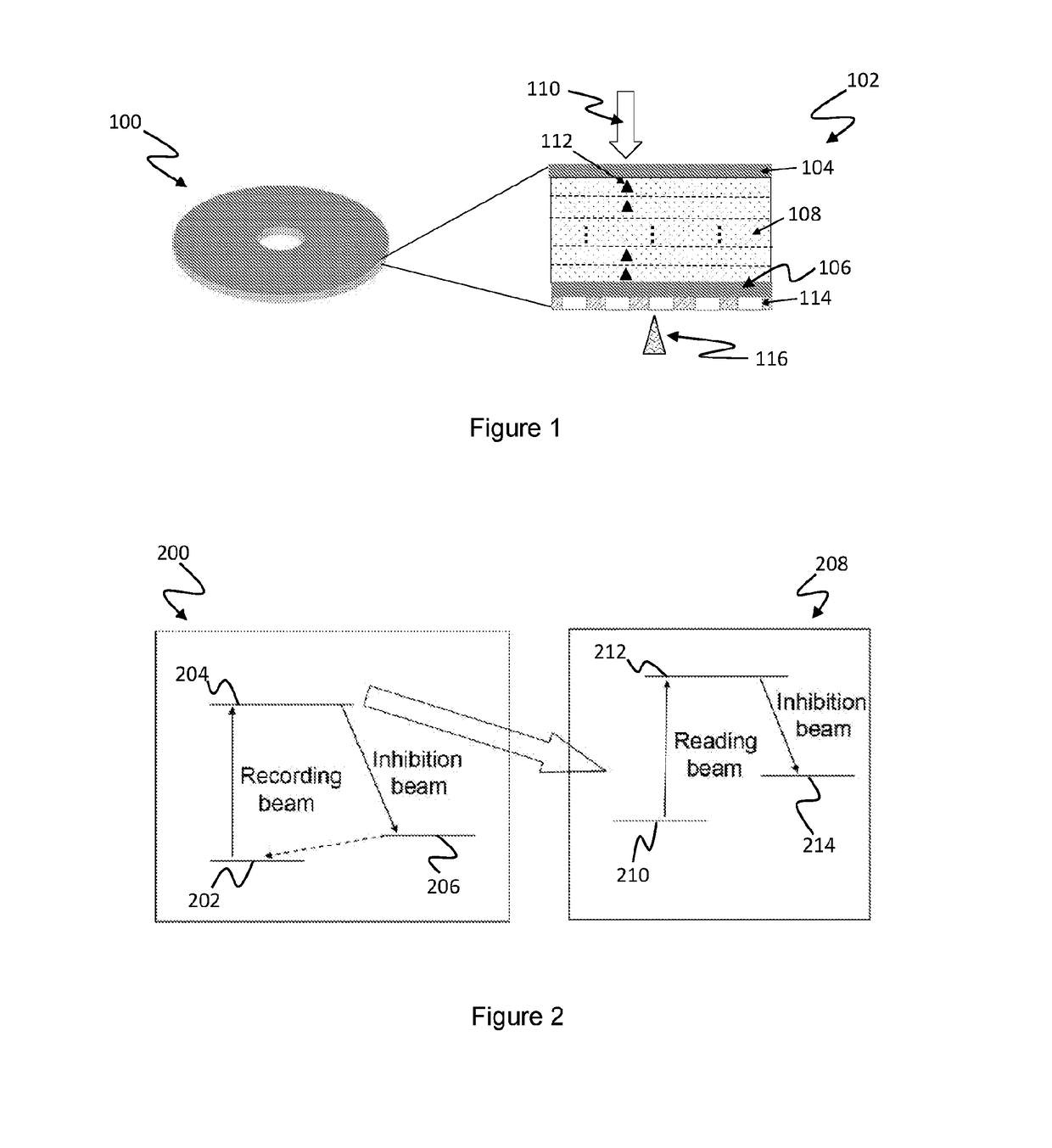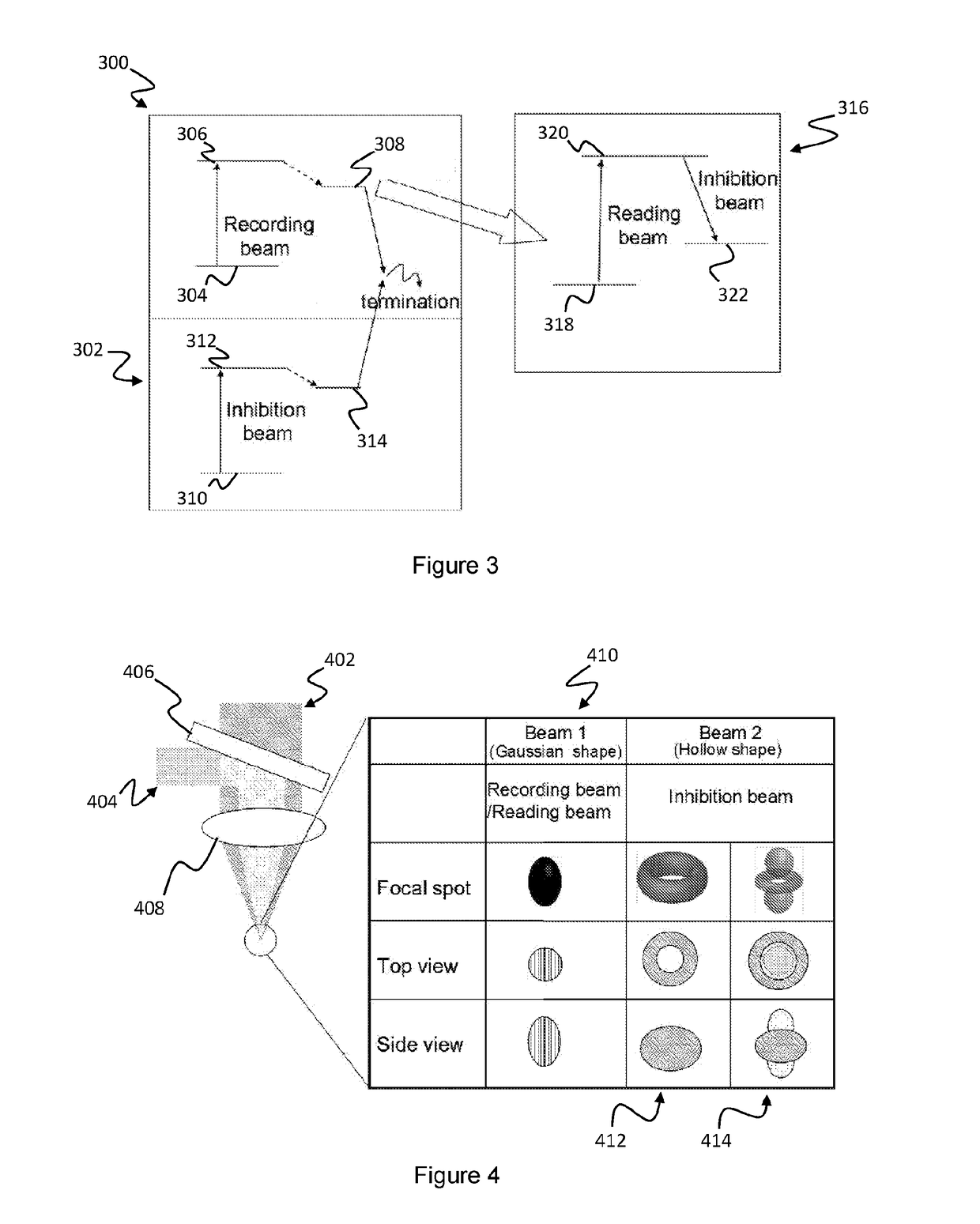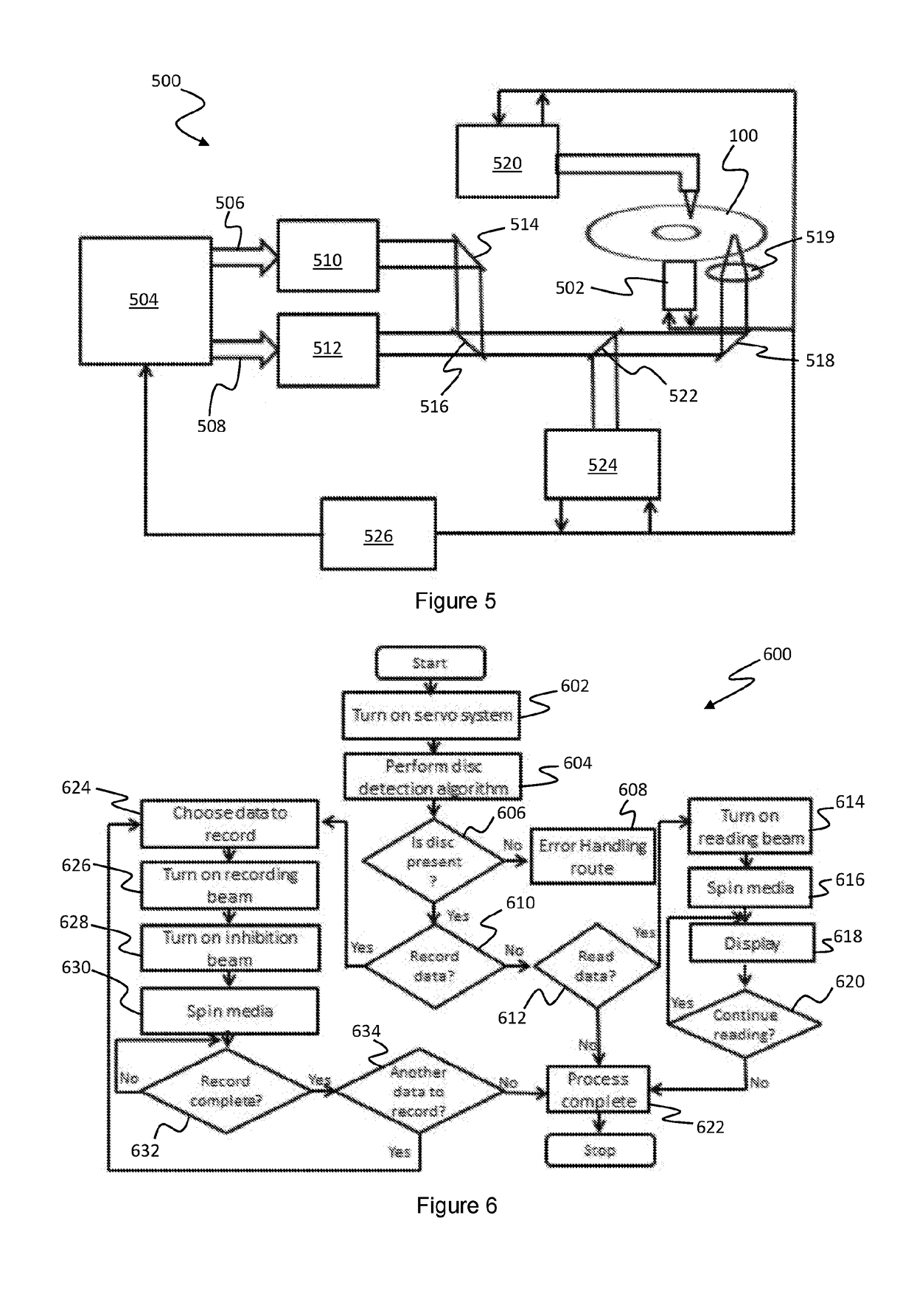Method and system for optical data storage
a data storage and optical data technology, applied in the field of data storage systems, can solve the problems of limited data density in the depth dimension, limited resolution of optical data storage, and limited number of discrete layers that can be incorporated into the recording medium in this manner, and achieve the effect of increasing the data transfer ra
- Summary
- Abstract
- Description
- Claims
- Application Information
AI Technical Summary
Benefits of technology
Problems solved by technology
Method used
Image
Examples
Embodiment Construction
[0064]As shown in FIG. 1 a disc-shaped recording medium 100 embodying the invention comprises a number of layers, as shown in cross-section 102. The disc 100 has a central hole, in a conventional manner, for receiving a spindle for spinning the disc. An upper protective layer 104 comprises an anti-wear substrate with refractive index matched to one or more recording layers 108, which comprise an optically active material able to induce a change in properties of the medium, and to generate a material response indicative of the changed properties, in the presence of optical radiation having a first characteristic, and wherein the change in properties, and the response indicative of changed properties, can be inhibited by optical radiation having a second characteristic.
[0065]In particular embodiments described herein, the first and second characteristics are optical frequency (i.e. photon energy), as described in greater details below with reference to FIGS. 2 and 3.
[0066]A lower prot...
PUM
| Property | Measurement | Unit |
|---|---|---|
| wavelength | aaaaa | aaaaa |
| wavelength | aaaaa | aaaaa |
| speed | aaaaa | aaaaa |
Abstract
Description
Claims
Application Information
 Login to View More
Login to View More - R&D
- Intellectual Property
- Life Sciences
- Materials
- Tech Scout
- Unparalleled Data Quality
- Higher Quality Content
- 60% Fewer Hallucinations
Browse by: Latest US Patents, China's latest patents, Technical Efficacy Thesaurus, Application Domain, Technology Topic, Popular Technical Reports.
© 2025 PatSnap. All rights reserved.Legal|Privacy policy|Modern Slavery Act Transparency Statement|Sitemap|About US| Contact US: help@patsnap.com



